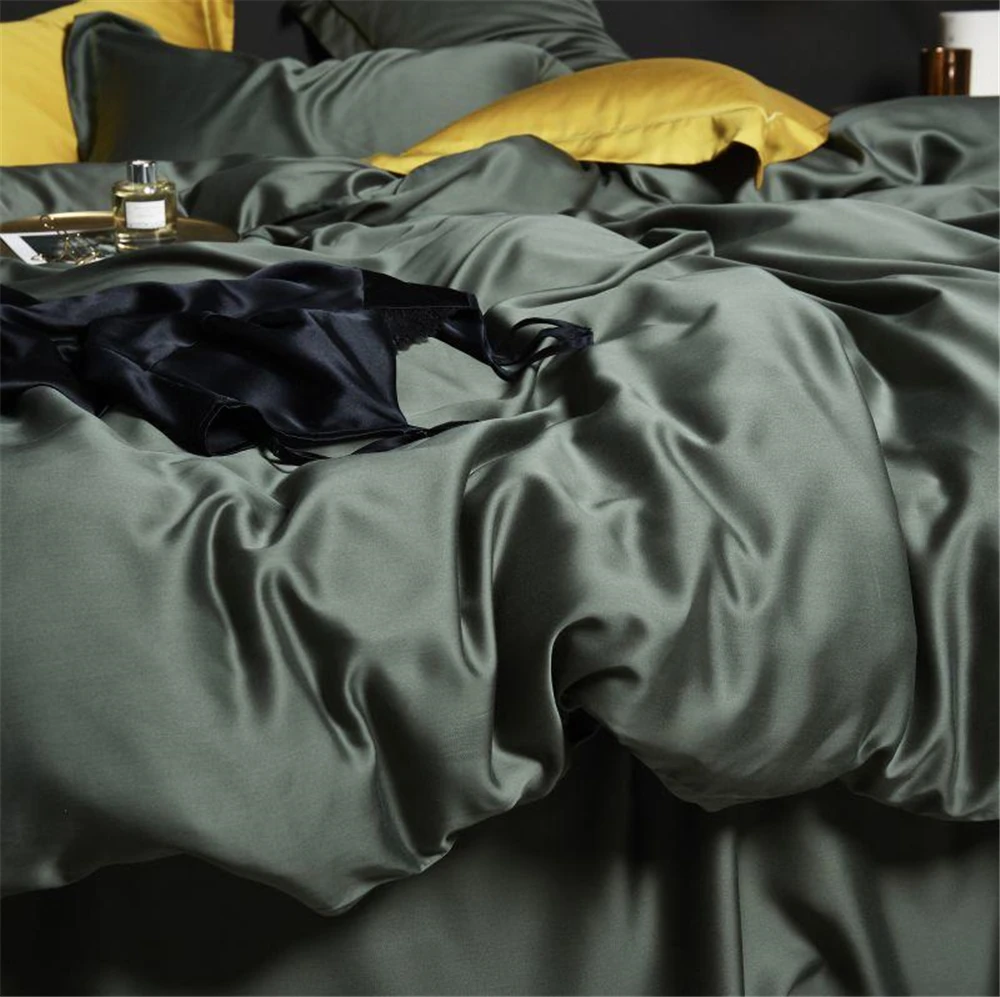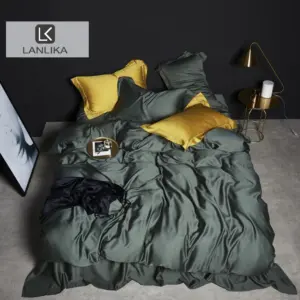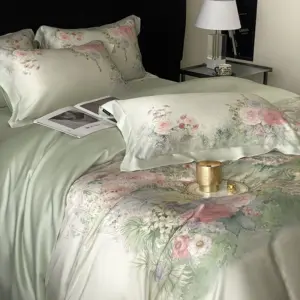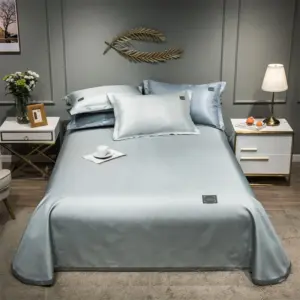The Rising Demand for Ethical Silk Bedding Solutions
The landscape of luxury bedding is evolving rapidly as consumers increasingly seek options that align with their environmental values without compromising on quality. Sustainable silk bedding has emerged at the forefront of this movement, offering the perfect marriage between indulgent comfort and responsible consumption.
Traditional silk production has long raised environmental and ethical concerns, from intensive water usage to questionable silkworm harvesting practices. Today’s conscious consumers are demanding better alternatives that deliver:
- Reduced environmental impact through responsible resource management
- Ethical treatment of silkworms and fair labor practices
- Chemical-free processing that’s safer for people and planet
- Luxury quality that rivals or exceeds conventional silk
At Sanctuary Soft, sustainable luxury isn’t just a trend—it’s a core commitment that shapes our entire product philosophy. Throughout this comprehensive guide, we’ll explore the fascinating world of sustainable silk bedding, helping you understand different options available and how to select pieces that perfectly balance luxury, ethics, and environmental responsibility.
The market for sustainable textiles has grown by over 15% annually in recent years, with eco-friendly silk alternatives leading this transformation by significantly reducing water usage and chemical impacts compared to conventional production methods.
Understanding the amazing benefits of mulberry silk sheets provides essential context for appreciating why sustainable versions are worth pursuing.
Understanding What Makes Silk Truly Sustainable
Sustainable silk represents a fundamental shift in how this luxury fabric is produced, processed, and marketed. At its core, truly sustainable silk meets specific criteria that address both environmental and ethical concerns throughout its lifecycle.
What Makes Silk Sustainable:
– Ethical harvesting that minimizes or eliminates harm to silkworms
– Organic cultivation free from synthetic pesticides and fertilizers
– Reduced water consumption and responsible waste management
– Non-toxic processing using natural or low-impact dyes
– Fair labor practices and transparent supply chains
– Consideration for complete lifecycle including biodegradability
Conventional silk production typically involves boiling silk cocoons with the silkworms still inside, raising serious ethical questions. Additionally, traditional sericulture often relies on intensive mulberry tree farming using chemical fertilizers and pesticides, followed by harsh chemical processing that creates significant wastewater issues.
In contrast, sustainable silk production embraces methods that reduce environmental impact by up to 70% in water usage and eliminates toxic chemicals from both farming and processing stages. These approaches preserve the luxurious qualities that make silk so desirable while addressing its problematic aspects.
The conversation around sustainable silk must also include innovative alternatives that mimic silk’s properties while further reducing environmental impacts—from plant-based options to recycled materials that offer similar benefits with different ecological profiles.
Understanding what makes mulberry silk special helps create a foundation for recognizing the importance of sustainable production practices in preserving these qualities.
Peace Silk: The Cruelty-Free Luxury Option
Peace silk (also known as Ahimsa silk) represents one of the most significant ethical innovations in silk production. Unlike conventional silk where silkworms are killed in their cocoons before they emerge, peace silk allows the metamorphosis process to complete naturally.
The Peace Silk Production Process:
- Natural Completion – Silkworms are allowed to complete their lifecycle, emerging from cocoons as moths
- Ethical Collection – Empty cocoons are collected only after moths have naturally emerged
- Careful Processing – The broken filaments are spun together using specialized techniques
- Minimal Treatment – Processing uses fewer chemicals than conventional methods
This approach fundamentally transforms silk from an animal product with ethical concerns into one that works in harmony with natural cycles. The resulting fabric maintains luxurious qualities while addressing animal welfare concerns that many consumers find compelling.
Peace silk has a slightly different texture than conventional silk—it’s often more textured with a natural slub that creates a distinctive character. This unique quality has made it particularly appealing to those who appreciate artisanal, hand-crafted textiles with natural variations.
Environmental benefits extend beyond animal welfare, as peace silk production typically employs more traditional, less chemical-intensive processing methods. Many peace silk producers also incorporate organic cultivation practices, creating a doubly sustainable product.
The tactile experience of peace silk bedding offers a slightly more rustic yet equally luxurious feel compared to conventional silk, with exceptional breathability and temperature regulation. For those seeking truly ethical luxury silk bedding sets, peace silk offers an option that aligns with compassionate values.
Organic Mulberry Silk: Premium Sustainability Meets Luxury
Organic mulberry silk represents the gold standard in sustainable luxury bedding, combining traditional silk’s opulent qualities with rigorous environmental standards. This premium option begins with the cultivation of mulberry trees without synthetic pesticides, herbicides, or fertilizers.
The organic approach to mulberry silk production focuses on creating healthy ecosystems rather than simply maximizing yield. Organic mulberry farms typically support 50% more biodiversity than conventional operations and use approximately 60% less water through more efficient irrigation and natural cultivation methods.
Processing organic silk maintains this commitment to sustainability by eliminating harsh chemicals in favor of natural enzymes and biodegradable soaps. The result is a purer product free from potentially harmful residues while preserving silk’s natural properties.
Key Certification Standards:
| Certification | What It Verifies | Why It Matters |
|---|---|---|
| GOTS | Organic cultivation, ethical processing, social responsibility | Comprehensive standard for entire production chain |
| OEKO-TEX | Testing for harmful substances | Ensures final product is safe for human contact |
| Soil Association | Organic farming practices | Verifies sustainable agricultural methods |
The luxurious character of organic mulberry silk is unsurpassed—featuring exceptional sheen, smooth texture, and natural temperature regulation. In the premium 19-25 momme weight range, these sheets provide the perfect balance of durability and drape that discerning customers seek.
Sanctuary Soft specializes in organic mulberry silk bedding that honors both luxury traditions and forward-thinking sustainability. The resulting products deliver the ultimate sleep experience while aligning with eco-conscious values.

Exploring our collection of mulberry silk bedding sets reveals how premium quality and sustainability can perfectly complement each other.
Recycled Silk: Giving Luxury Fibers a Second Life
Recycled silk represents circular economy principles applied to luxury textiles, transforming what would be waste into beautiful, useful products. This innovative approach diverts silk waste from landfills while reducing demand for new raw materials.
The recycling process begins with collection of pre-consumer silk waste from factories (cutting room scraps), post-industrial silk (manufacturing overruns), or post-consumer silk garments. These materials undergo careful sorting by color and quality before being mechanically shredded into fibers that can be respun.
The environmental benefits are significant—recycled silk production uses approximately 90% less water and 75% less energy than conventional silk manufacturing. This approach also eliminates the need for additional dyeing in many cases, as fibers are sorted by color before processing.
The resulting fabric has a distinctive character with slight texture variations that many designers and consumers appreciate for its unique aesthetic. While recycled silk may have slightly shorter fibers than virgin silk, modern processing techniques create bedding with remarkable durability and comfort.
Recycled silk excels in applications like duvet covers and decorative pillowcases, though it may be blended with other fibers for sheets requiring maximum smoothness. The material maintains excellent temperature regulation and moisture-wicking properties while offering a sustainable alternative to conventional silk.
Understanding the complete guide to mulberry silk bed sheets provides valuable context for appreciating recycled silk’s innovations while recognizing its distinctive qualities compared to virgin materials.
Wild Silk Varieties: Nature’s Untamed Luxury
Wild silk varieties offer some of the most fascinating sustainable options in luxury bedding, with distinctive characteristics derived from their natural, minimally-intervened origins. Unlike cultivated silk varieties, wild silks come from silkworms that live freely in forests, creating a truly sustainable harvesting model.
The most prominent wild silk varieties each offer unique properties:
| Wild Silk Type | Source | Characteristics | Best Applications |
|---|---|---|---|
| Tussah (Tussar) | Wild Antheraea moths | Golden color, textured feel, exceptional durability | Duvet covers, throws |
| Eri | Samia ricini moth | Wool-like texture, excellent insulation, matte finish | Winter bedding, coverlets |
| Muga | Antheraea assamensis | Golden sheen, incredible durability, improves with washing | Heirloom-quality sheets |
Wild silk harvesting follows a naturally sustainable rhythm—cocoons are collected only after moths have emerged, making these varieties cruelty-free by definition. The silkworms feed on forest trees that grow without agricultural intervention, eliminating the need for irrigation, fertilizers, or pesticides.
The textural qualities of wild silk differ noticeably from cultivated varieties. They typically feature more texture and character with natural color variations that many luxury consumers appreciate for their authentic, artisanal quality. These silks often become softer and more lustrous with each washing, developing a patina that reflects their natural origins.
From a sustainability perspective, wild silk supports forest conservation efforts since the silkworms require healthy forest ecosystems to thrive. Many wild silk harvesting communities have maintained traditional practices for centuries, creating economic incentives to preserve forest habitats.
For those seeking genuine silk with impeccable ethical credentials, our 100% silk sheets collection includes carefully sourced wild silk options that deliver distinctive luxury with environmental integrity.
Eucalyptus Lyocell: The Revolutionary Silk Alternative
Eucalyptus lyocell has emerged as one of the most impressive sustainable alternatives to traditional silk, offering comparable luxury with a completely different ecological profile. This innovative fabric combines silky smooth texture with outstanding environmental credentials.
The production process begins with sustainably harvested eucalyptus wood, which grows rapidly with minimal water and no pesticides. This renewable resource is transformed into fiber through a closed-loop lyocell process that recovers over 99% of the solvents used, creating a remarkably clean manufacturing cycle.
Environmental benefits of eucalyptus lyocell compared to conventional silk are substantial:
– Uses 95% less water than traditional silk production
– Requires no agricultural land that could otherwise grow food
– Creates biodegradable fiber that returns safely to the earth
– Eliminates ethical concerns associated with silkworm harvesting
The resulting fabric offers a luxury experience remarkably similar to silk—smooth, cooling, and breathable with excellent moisture management. Many users find eucalyptus lyocell even more comfortable against the skin than traditional silk, with comparable temperature regulation and a slightly more substantial drape.
Eucalyptus lyocell excels for those with sensitive skin or allergies, as its naturally hypoallergenic surface is gentle and non-irritating. The fabric maintains its beauty through proper washing with minimal care requirements compared to true silk.
Sanctuary Soft’s eucalyptus lyocell offerings deliver the perfect balance of luxury and sustainability, creating bedding that feels as good for your conscience as it does against your skin. For those seeking sustainable luxury without animal products, our eucalyptus silk sheets provide a perfect solution.
Bamboo-Derived Fabrics: Sustainable Softness for Bedding
Bamboo-derived fabrics have revolutionized sustainable bedding by offering silk-like properties with remarkable environmental advantages. These materials capitalize on bamboo’s status as one of the world’s most renewable resources—growing up to 3 feet daily without requiring replanting, pesticides, or intensive irrigation.
However, not all bamboo fabrics offer equal sustainability. The processing method makes a crucial difference:
Bamboo Lyocell: The most sustainable option uses closed-loop manufacturing similar to eucalyptus lyocell, recovering solvents and minimizing environmental impact. This creates exceptionally soft fabric with excellent drape and moisture management.
Bamboo Viscose/Rayon: While still using renewable bamboo, this more common process employs chemicals that may be released into the environment if not properly managed. The resulting fabric is very soft but with somewhat lower environmental credentials.
Bamboo-derived fabrics excel in properties that matter for bedding:
– Natural temperature regulation for comfortable sleep
– Exceptional moisture-wicking for dry comfort
– Antibacterial properties for fresher bedding
– Hypoallergenic surface ideal for sensitive skin
– Remarkable softness that rivals or exceeds silk
The sustainability advantages are substantial—bamboo requires less than 1/3 the water of cotton cultivation and can produce 10 times more fiber per acre than cotton. The plants naturally sequester carbon and release more oxygen than equivalent timber.
With proper care, bamboo-derived bedding maintains its silk-like qualities through hundreds of wash cycles, making it an excellent investment for long-term use. These fabrics typically offer more durability than true silk while delivering comparable luxury at a more accessible price point.
For those seeking sustainable luxury with exceptional performance, our bamboo silk sheets provide an excellent alternative to traditional silk with impressive environmental credentials.
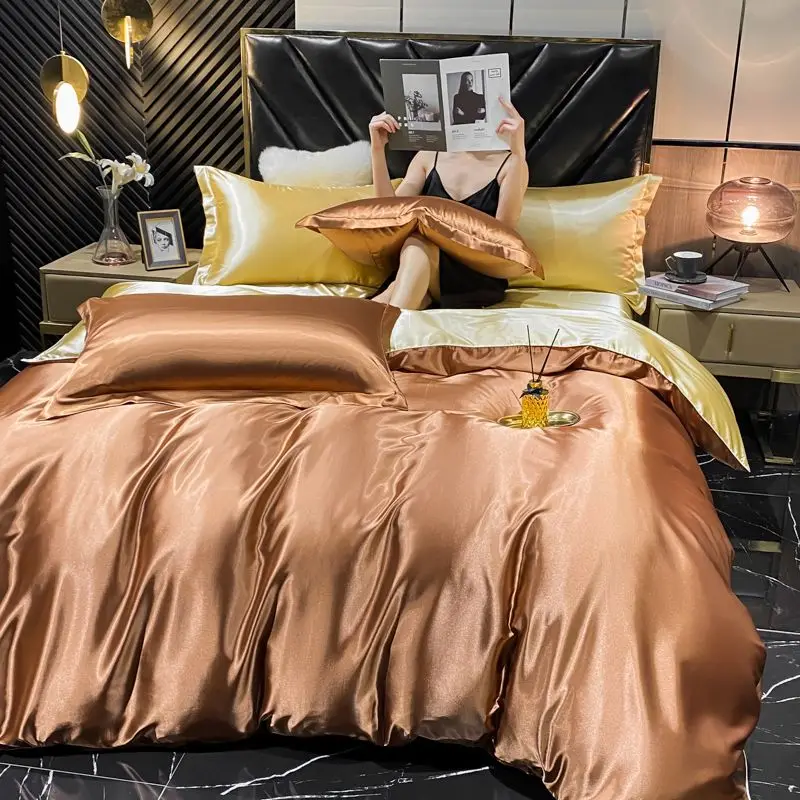
Other Innovative Silk-Like Sustainable Fabrics
The sustainable textile landscape continues to evolve with remarkable innovations that replicate silk’s luxurious qualities while addressing environmental concerns. These alternatives offer exciting options for eco-conscious luxury consumers:
Modal Fabric
– Sourced from renewable beechwood harvested from managed forests
– Semi-synthetic process creates exceptional softness and silk-like drape
– Requires significantly less water than cotton production
– Biodegradable material returns safely to the environment
– Excellent for flowing sheet sets with minimal wrinkling
Cupro Fabric
– Upcycles cotton linter waste that would otherwise be discarded
– Creates remarkably fluid fabric with liquid-silk characteristics
– Breathable and temperature-regulating like natural silk
– Biodegradable composition with reduced virgin resource demand
– Perfect for pillowcases that protect skin and hair
Orange Fiber
– Innovative fabric made from citrus juice byproducts
– Transforms food industry waste into luxury textiles
– Requires no additional agricultural land or water
– Silky smooth texture with natural sheen
– Emerging option for specialty bedding pieces
These innovative materials are pushing the boundaries of sustainable luxury, offering performance that rivals traditional silk while addressing environmental concerns. Many combine the best properties of natural and synthetic fibers—creating durable, low-maintenance fabrics that maintain their beauty through years of use.
For environmentally conscious consumers who prefer animal-free options, these materials offer compelling alternatives to traditional silk without compromising on luxury or performance. Each brings unique benefits to different bedding applications, allowing for customized solutions based on individual preferences and priorities.
Explore our diverse collection of vegan silk bedding to discover how these innovative materials can transform your sleep experience while aligning with your values.
Essential Certifications for Truly Sustainable Silk Bedding
Navigating sustainability claims requires understanding credible certifications that validate a product’s environmental and ethical credentials. These third-party standards provide assurance that sustainable silk bedding truly delivers on its promises.
GOTS (Global Organic Textile Standard)
The gold standard for organic textiles, GOTS certification covers the entire production chain from harvesting to labeling. It verifies organic cultivation, prohibits toxic inputs, requires wastewater treatment, and mandates fair labor practices throughout production.
OEKO-TEX Standard 100
This certification focuses specifically on harmful substances, testing finished products for hundreds of potentially dangerous chemicals. It ensures bedding is safe for human use, with particular importance for items in direct skin contact like sheets and pillowcases.
Fair Trade Certification
Fair Trade standards verify ethical treatment of workers with fair wages, safe conditions, and community investment. For silk production, this addresses important social sustainability aspects often overlooked in purely environmental certifications.
USDA/Soil Association Organic
These certifications focus specifically on the agricultural aspects of silk production, verifying that mulberry trees are grown using organic methods without synthetic pesticides or fertilizers.
EU Ecolabel/Cradle to Cradle
These more comprehensive standards evaluate products across their entire lifecycle, from resource extraction to disposal or recycling. They represent the highest level of holistic sustainability assessment.
When evaluating sustainable silk bedding, look for products carrying at least one of these certifications to ensure claims are verified by independent experts. The most credible sustainable brands will transparently share their certification details and explain the specific environmental benefits of their production methods.
The unveiling benefits of vegan silk bedding reveals how these certifications apply to silk alternatives as well, providing assurance across the spectrum of sustainable options.
Environmental and Ethical Benefits of Sustainable Silk Choices
Choosing sustainable silk bedding creates significant positive impacts across multiple dimensions—from environmental protection to human health benefits. These conscious choices contribute to broader sustainability goals while delivering personal advantages.
Environmental Impact Reduction
Sustainable silk production dramatically reduces resource consumption, with organic methods using up to 65% less water than conventional silk farming. Chemical use is similarly reduced, with organic and peace silk eliminating synthetic pesticides and fertilizers that can contaminate soil and waterways.
Carbon footprint improvements are also substantial—many sustainable silk alternatives like eucalyptus lyocell produce 60% fewer carbon emissions across their lifecycle compared to conventional silk. This contributes meaningfully to climate change mitigation efforts.
Ethical Improvements
The ethical dimensions of sustainable silk address both animal welfare and human labor concerns. Peace silk and silk alternatives eliminate the traditional practice of killing silkworms, while fair trade certifications ensure workers receive fair compensation in safe conditions.
Many sustainable silk producers also support traditional artisan communities, preserving cultural heritage and specialized skills that might otherwise disappear in industrialized production.
Health and Wellness Benefits
The personal benefits of sustainable silk bedding include reduced exposure to potentially harmful chemicals found in conventionally processed textiles. This is particularly important for the 35% of consumers who report skin sensitivity to certain textile chemicals.
Sustainable silk options maintain or enhance the natural benefits of silk, including:
– Temperature regulation for comfortable sleep
– Moisture management that keeps skin dry
– Hypoallergenic properties ideal for sensitive skin
– Natural resistance to dust mites and other allergens
These comprehensive benefits make sustainable silk bedding a meaningful investment in both personal wellbeing and planetary health. The advantages of sleeping on mulberry silk are preserved while addressing environmental and ethical concerns.
How to Select Premium Sustainable Silk Bedding
Selecting the perfect sustainable silk bedding requires understanding key quality indicators and matching options to your specific needs. This knowledge empowers you to make choices that deliver the luxury experience you desire while honoring your environmental values.
Understanding Momme Weight
Momme (mm) weight measures silk fabric density and serves as a primary quality indicator. For bedding, the optimal range is 19-25mm:
– 19-21mm: Lightweight with excellent drape and breathability
– 22-25mm: Medium weight balancing durability and softness
– 25+mm: Heavier weight maximizing durability and insulation
Higher momme weights typically indicate greater durability and longevity, though very high weights may sacrifice some of silk’s natural breathability.
Silk Weave Variations
The weave structure significantly impacts both aesthetics and performance:
| Weave Type | Characteristics | Best Applications |
|---|---|---|
| Charmeuse | Lustrous face, matte back, smooth drape | Sheets, pillowcases |
| Habotai | Lightweight, balanced shine, breathable | Summer bedding, light covers |
| Crepe de Chine | Textured surface, excellent durability | Year-round sheets, duvet covers |
Natural Dyeing Considerations
Sustainable silk often features natural or low-impact dyes that offer environmental benefits with some distinctive characteristics:
– Natural dyes may have subtle color variations that create unique character
– Low-impact dyes maintain color consistency while reducing environmental impact
– Undyed (natural ecru) options provide the purest experience for sensitive individuals
Price-to-Value Analysis
Sustainable silk typically commands a premium price compared to conventional options, but this investment delivers greater value through:
– Extended product lifespan (often 2-3 times longer than conventional silk)
– Reduced environmental impact throughout the product lifecycle
– Superior comfort and performance that improves sleep quality
– Alignment with personal values that enhances satisfaction
When evaluating options, consider your specific priorities—temperature regulation, ethical concerns, environmental impact, or specific skin sensitivities—to select the sustainable silk bedding that perfectly matches your needs.
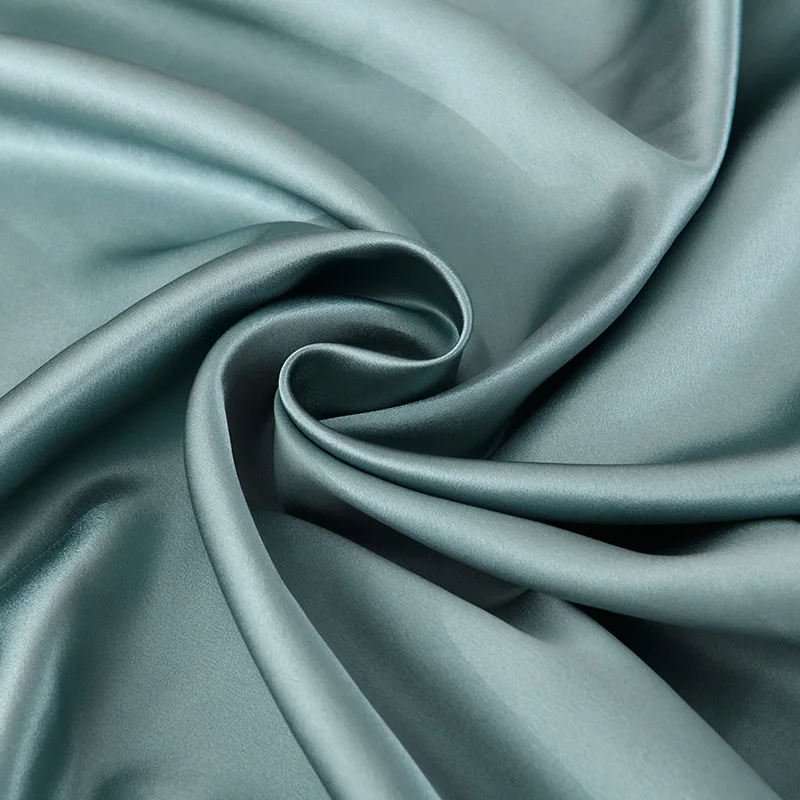
Understanding why choose mulberry silk sheets provides additional context for making informed selection decisions based on quality indicators.
Outstanding Sustainable Silk Bedding Brands
The market for sustainable silk bedding features several outstanding brands that combine luxury with environmental responsibility. Each brings distinctive strengths to their sustainable offerings.
Sanctuary Soft stands at the forefront of sustainable luxury with its exceptional range of both traditional silk and innovative alternatives. Our commitment to sustainability encompasses both environmental and ethical dimensions, with rigorous material selection and processing standards. Our 19-25 momme weight silk offerings provide the perfect balance of luxury and durability, while our eucalyptus and bamboo alternatives deliver comparable performance with different ecological benefits.
100% Silk Sheets, Green Silk Sheets, King Size Silk Bedding Set, Mulberry Silk Bedding Sets, Queen Size Silk Bedding Set
Price range: $1,246.21 through $1,615.22 Select options This product has multiple variants. The options may be chosen on the product pageEucalyptus Silk Bedding Sets, Eucalyptus Silk Sheets
Price range: $360.24 through $393.60 Select options This product has multiple variants. The options may be chosen on the product page- Price range: $267.82 through $306.55 Select options This product has multiple variants. The options may be chosen on the product page
Bamboo Silk Sheets, Cooling Silk Sheets
Price range: $130.76 through $177.80 Select options This product has multiple variants. The options may be chosen on the product page100% Silk Sheets, King Size Silk Bedding Set, Mulberry Silk Bedding Sets, Queen Size Silk Bedding Set, White Silk Sheets
Price range: $1,000.79 through $1,351.42 Select options This product has multiple variants. The options may be chosen on the product pageBamboo Silk Sheets, Queen Size Silk Fitted Sheet
Price range: $230.24 through $297.88 Select options This product has multiple variants. The options may be chosen on the product page
When evaluating sustainable silk brands, consider these key differentiators:
– Certification coverage across all claimed sustainability dimensions
– Transparency about sourcing and processing methods
– Range of options addressing different sustainability priorities
– Price points relative to quality and durability offered
– Customer service that supports long-term product care
The best sustainable silk brands combine impeccable product quality with genuine environmental commitment, creating luxury bedding that truly delivers on its promises. These companies view sustainability not as a marketing angle but as a fundamental business philosophy that shapes every aspect of their operations.
By supporting brands with authentic sustainability practices, consumers drive continued innovation and improvement in the luxury bedding sector, encouraging more companies to adopt responsible practices throughout their supply chains.
Essential Care Guide for Sustainable Silk Bedding
Proper care maximizes the lifespan and performance of sustainable silk bedding, protecting both your investment and its environmental benefits. While specific instructions may vary slightly between types, these general guidelines will help maintain your bedding’s beauty and integrity.
Washing Instructions by Type:
True Silk (Peace Silk, Organic Silk): Hand wash in cool water with pH-neutral soap or machine wash on delicate cycle in mesh laundry bag. Use silk-specific detergent without enzymes or brighteners.
Eucalyptus Lyocell: Machine wash cold on gentle cycle with mild detergent. Avoid fabric softeners and bleach.
Bamboo Silk: Machine wash in cool water on gentle cycle. Use mild, biodegradable detergent free from harsh chemicals.
Other Alternatives: Generally more durable than true silk; follow specific care instructions for each material type.
Drying Best Practices:
– Air dry by laying flat on clean towel away from direct sunlight
– If machine drying alternatives, use lowest heat setting and remove promptly
– Never wring or twist silk items, which damages fibers
– Iron only if necessary using silk setting (low heat) and pressing on reverse side
Storage Recommendations:
– Store fully dry in breathable cotton bags or pillowcases
– Avoid plastic containers which can trap moisture
– Keep away from direct sunlight which can fade colors
– Consider cedar elements to naturally deter moths
Stain Treatment:
– Address spills immediately by blotting (never rubbing)
– Avoid hot water which can set protein-based stains
– Use specialized silk stain removers for persistent marks
– Always test treatments on inconspicuous areas first
With proper care, sustainable silk bedding typically maintains its beauty for 5-10 years, compared to 2-3 years for conventional bedding—making it not just an environmentally responsible choice but an economically sound investment as well.
Answering Your Questions About Sustainable Silk Bedding
Is sustainable silk as durable as conventional silk?
Sustainable silk often exceeds the durability of conventional silk. Peace silk, with its naturally broken and respun fibers, creates a slightly stronger thread structure. Organic silk processed without harsh chemicals retains more of silk’s natural strength. Alternatives like eucalyptus lyocell and bamboo silk typically offer even greater durability, often lasting through hundreds more wash cycles than conventional silk.
Why does sustainable silk often cost more than conventional options?
The price difference reflects several factors: smaller-scale production without harmful shortcuts, fair compensation for workers throughout the supply chain, third-party certification costs, and additional care in processing to avoid environmental harm. However, the extended lifespan of these products (often 2-3 times longer) makes them more economical over time despite higher initial investment.
How can you verify sustainability claims from brands?
Look for specific certifications relevant to the claims being made—GOTS for organic materials, OEKO-TEX for chemical safety, Fair Trade for labor practices. Transparent brands will readily provide certification details and explain their specific sustainability practices. Be wary of vague claims without verification or brands that use sustainability language without specific details about their processes.
What are the key differences between various silk alternatives?
Eucalyptus lyocell offers exceptional cooling properties and moisture management with minimal care requirements. Bamboo-derived fabrics provide antibacterial benefits with slightly more warmth. Modal delivers exceptional softness with silk-like drape. The right choice depends on your specific priorities—temperature regulation, ease of care, particular feel, or environmental concerns.
Can sustainable silk bedding be machine washed?
True sustainable silks (peace silk, organic silk) should ideally be hand washed or machine washed on the gentlest cycle in a protective mesh bag. Most sustainable silk alternatives like eucalyptus lyocell and bamboo-derived fabrics are machine washable on gentle cycles, making them more convenient for regular use.
Sustainable silk bedding represents the perfect intersection of luxury and responsibility—delivering exceptional comfort while honoring environmental and ethical values. With proper selection and care, these products provide years of luxurious sleep while contributing to a healthier planet.

